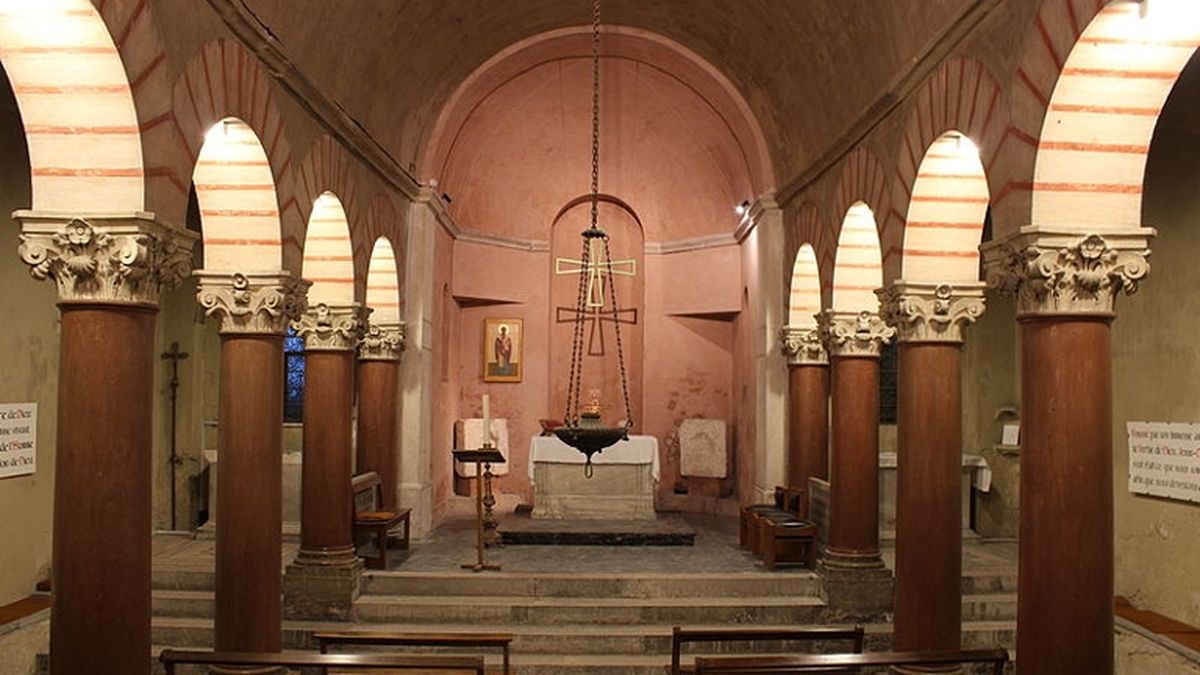 The crypt | ©Xavier Caré / WikimediaCommons / CC-BY-SA
The crypt | ©Xavier Caré / WikimediaCommons / CC-BY-SARebuilt after lots of events in the middle of the 19th century, St-Irénée houses a nice 9th century crypt!
Since the Gallo-Roman era, people buried corpses here, near an important Roman road linking Lugdunum (Lyon) to Burdigala (Bordeaux).
They found Roman tombs in the church courtyard...
Once upon a time a church
In the past, they called the church Saint-Irénée-sur-la-Montagne ("Saint-Irénée-on-the-Hill"), because it was located on a hill, aside from the city.
This church was raised on the foundations of an old crypt, where first persecuted Christians used to gather.
Here, 19 000 Christians were buried, (including saint Irénée, second bishop of Lyon or saint Epipoy) slaughtered in Lyon by Roman soldiers in 200...
Zachary, Irénée’s successor, dropped his bones here. The legend says the crypt’s soil was entirely stained with the martyrs' blood!
Then, a vast basilica dedicated to St-Jean was raised in 470 by bishop saint Patient.
Patient also restored the crypt... until Saracens, coming from Southern France, plundered the church in 732.
This one was totally abandoned: archbishops of Lyon finally decided to save the old building in the middle of the 9th century... They didn’t alter the crypt!
Re-raised in the 11th century, the basilica and the crypt were transformed into a gorgeous place: at that time, this last one had vaults flanked by 12 columns decorated with precious marble, and walls recovered with jasper and golden mosaic inlayed with precious gems...
Wars of Religion
During wars of Religion, on April 30th 1562, Protestants scattered our poor martyrs' ashes: they even mixed them with animals' bones!
They also plundered the church (goodbye, jasper and precious marble), so that was why it was re-raised in 1584.
All precious objects disappeared, except... a manuscript! We had a book written in the 4th century in Latin and Greek, the Codex Bezae Cantabrigiensis...
A man called Théodore de Bèze, a Protestant theologian, saved it from the destruction, then he gave it to Cambridge University (they still keep it).
The sacred giblets were dusted off and put back to their place, once wars were over!
